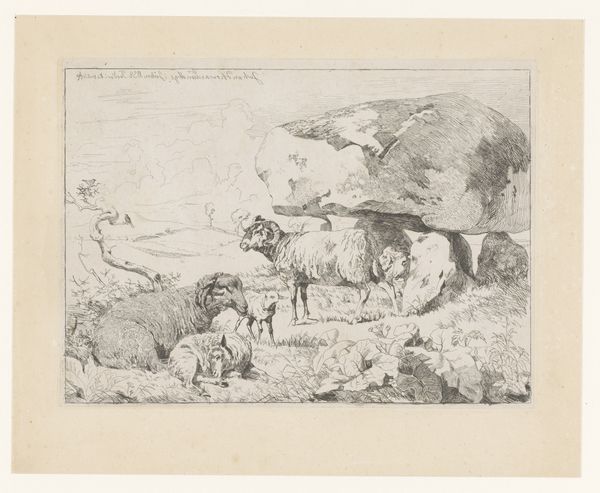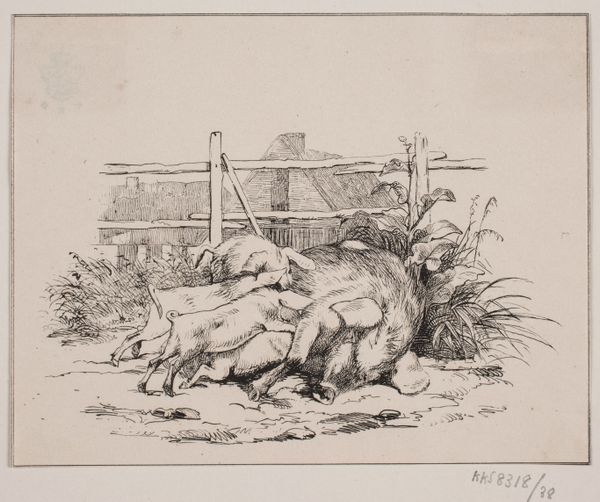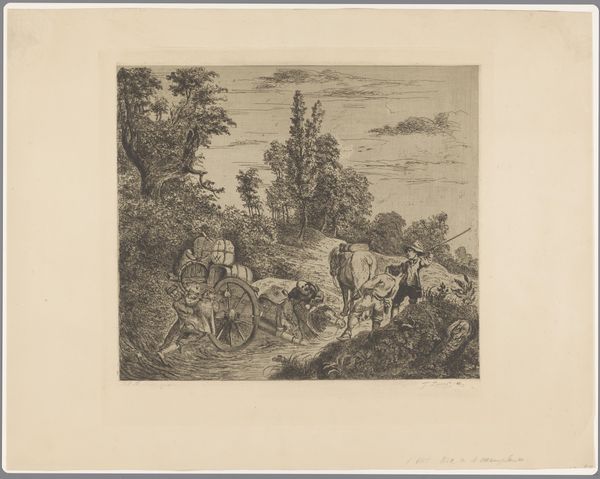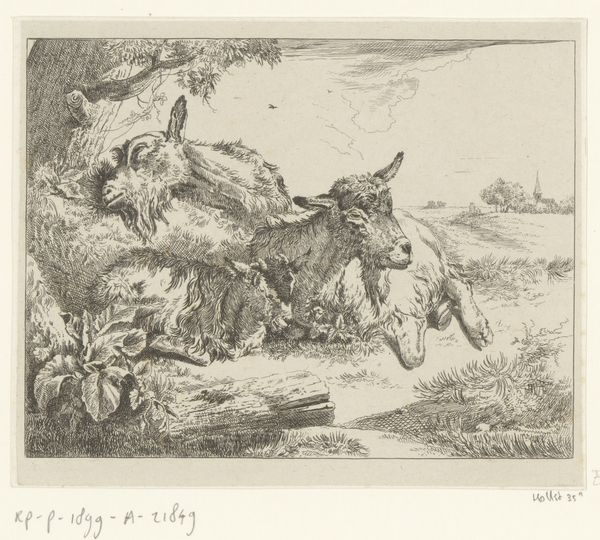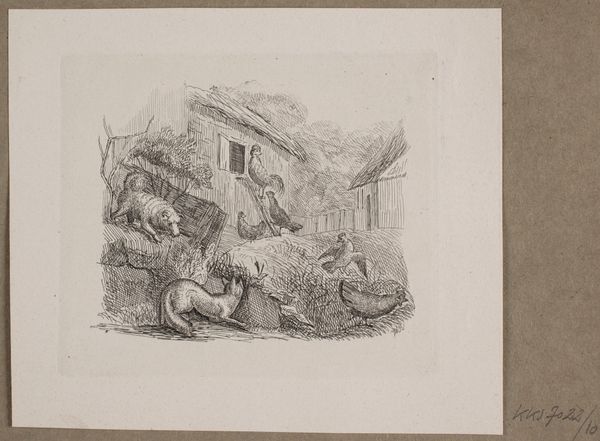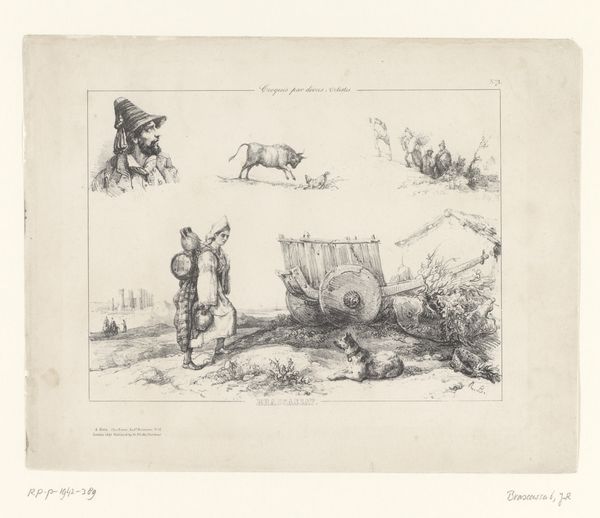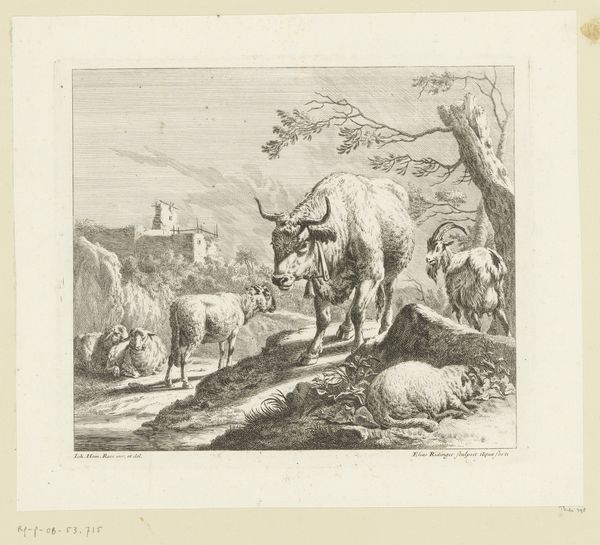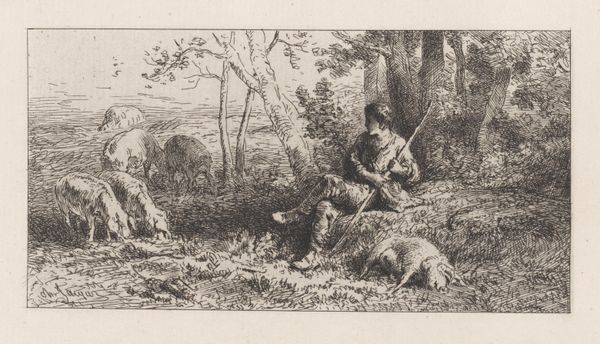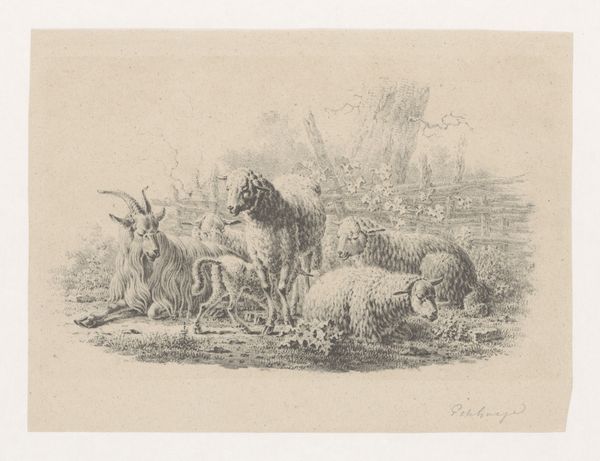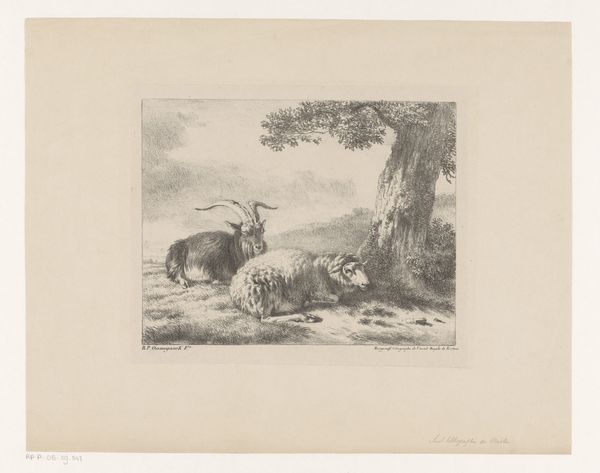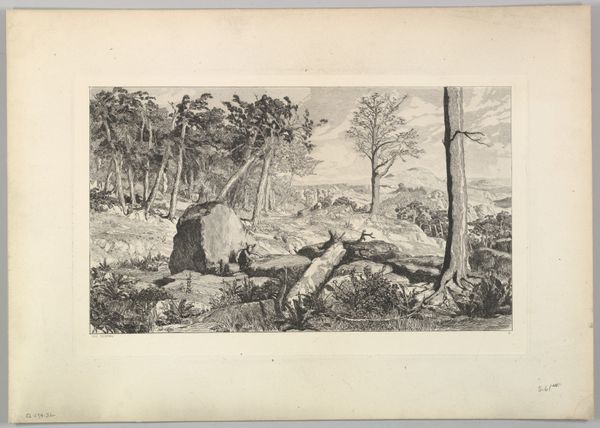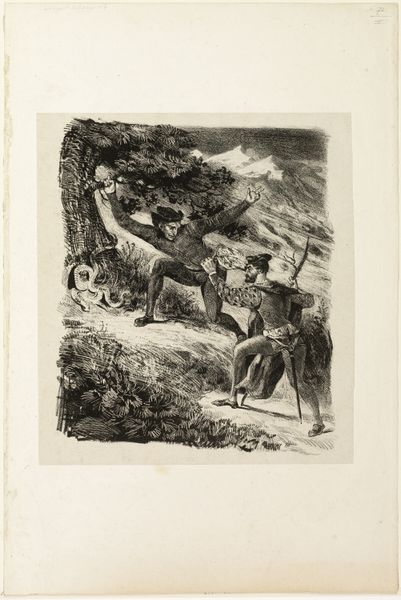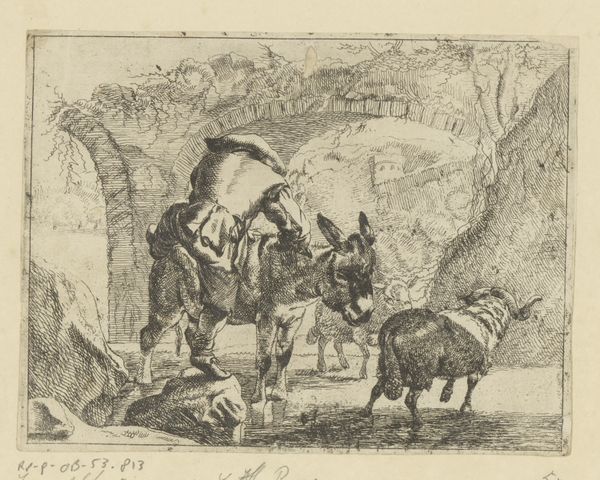
drawing, ink
#
drawing
#
ink drawing
#
landscape
#
ink
#
genre-painting
#
realism
Dimensions: 187 mm (height) x 228 mm (width) (bladmaal)
Curator: Well, here we have Niels Skovgaard’s ink drawing, "Svinet," created in 1917. It resides here at the SMK, Statens Museum for Kunst. Quite a striking scene, wouldn't you say? Editor: It definitely grabs your attention. The starkness of the ink creates an immediate sense of urgency, almost violent, as if something's about to happen. The roughness of the lines suggests a scene sketched quickly. Curator: Indeed. Skovgaard captures a genre scene – the quintessential pig slaughter! Consider how deeply ingrained this process was within rural communities, a cycle of life, death, and sustenance all bundled together. This isn't just an isolated moment, but a symbol of tradition. Editor: The focus on this practical scene really highlights the labor involved. Look at the way the woman's figure dominates the composition. There's nothing idealized here; just raw, physical effort to feed herself. You can almost feel the weight of the cleaver she’s swinging, an example of handmade tools. Curator: Observe how the artist juxtaposes her movement with the stillness of the pig. Is it sleeping, or… well, something more final? It plays on those very primal associations of vulnerability and dominance. Editor: And all those pumpkin leaves or whatever she’s cutting. The excess creates a sense of abundance. Were they used to feed the pig, too, contributing to its growth and thus, the woman’s work? Or the abundance that must have been there for her family? It’s very complex. Curator: Fascinating. The cultural weight of it—it certainly transcends mere documentation. There is much deeper value given here to nature and the simple fact of living on land and raising an animal for one's use. Editor: I agree. Thinking about the ink itself—such a commonplace medium—makes you consider how the resources for making images are more available than the process for obtaining your dinner. It also points to the relationship between what’s considered labor or consumption, and why? Curator: Precisely. Thank you for casting this in a broader social and material light. Editor: It’s always so much more in its context, no?
Comments
No comments
Be the first to comment and join the conversation on the ultimate creative platform.
